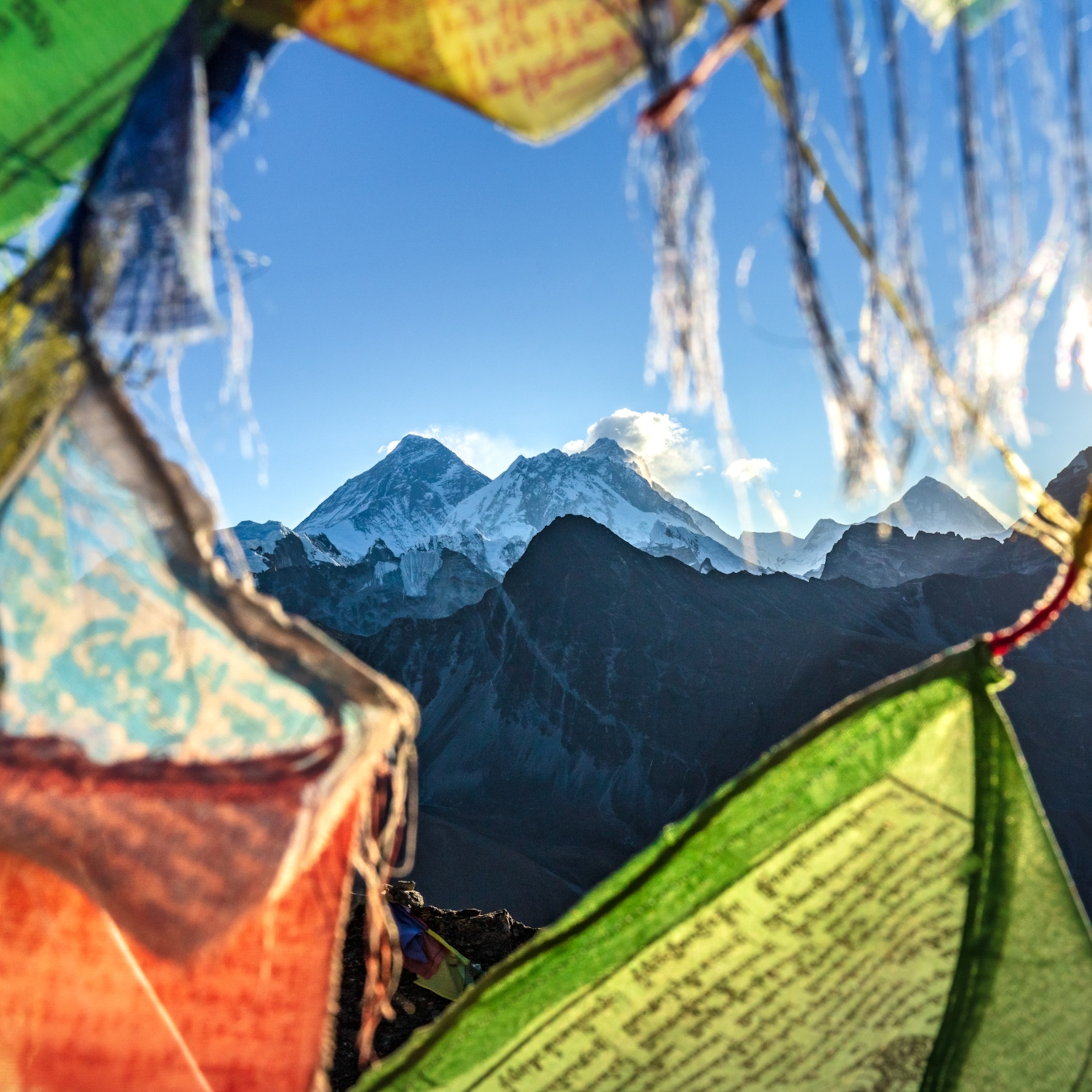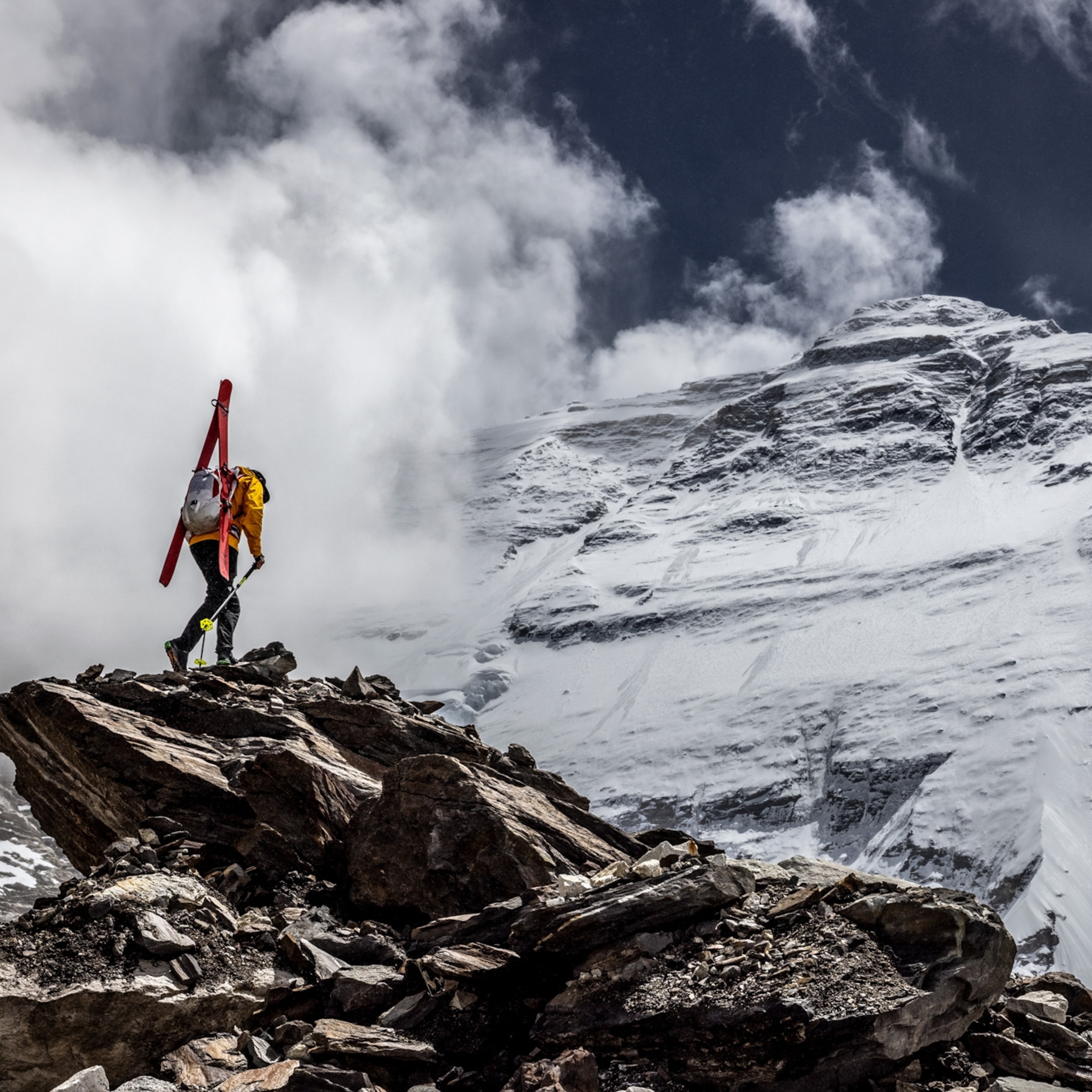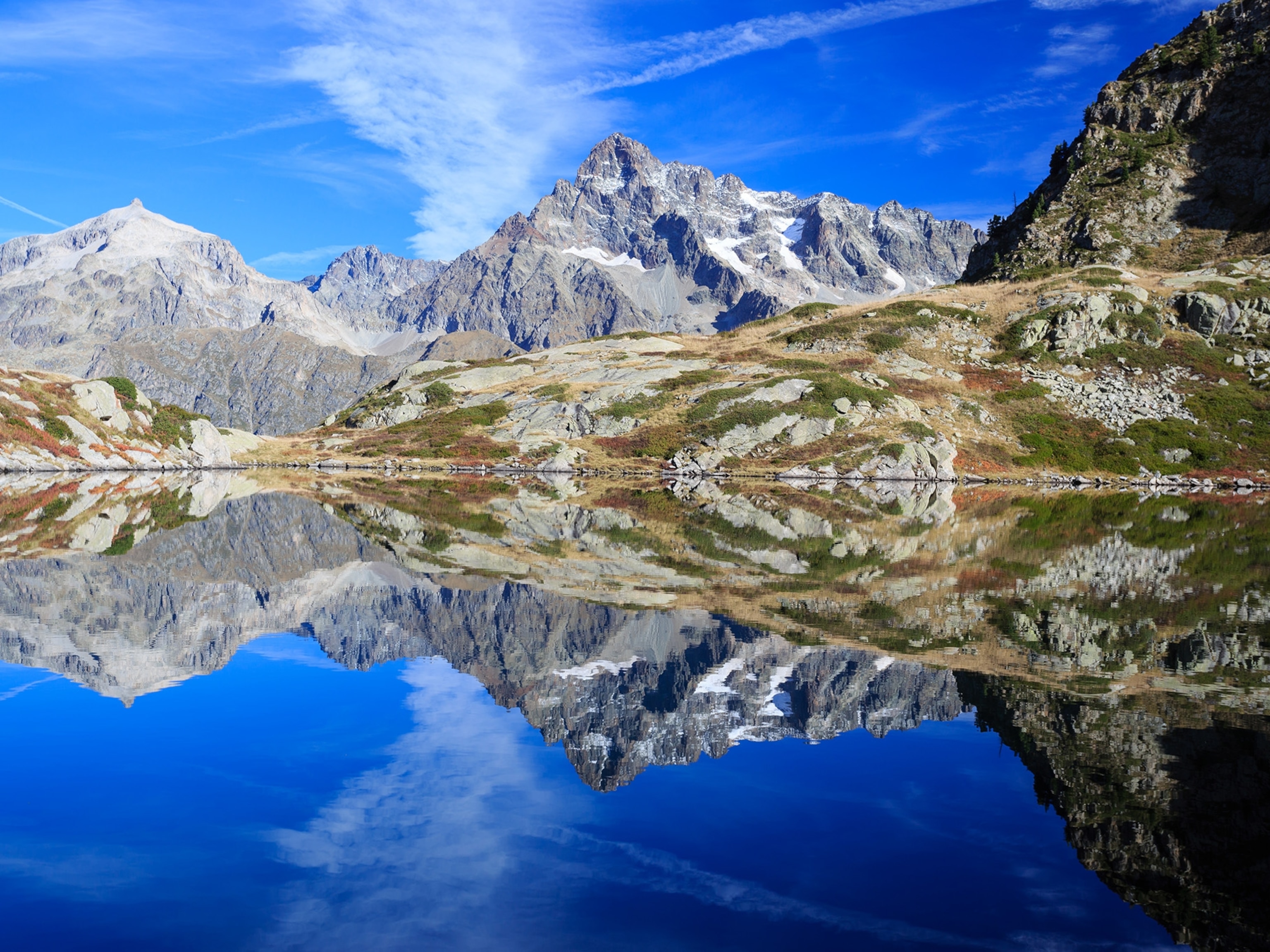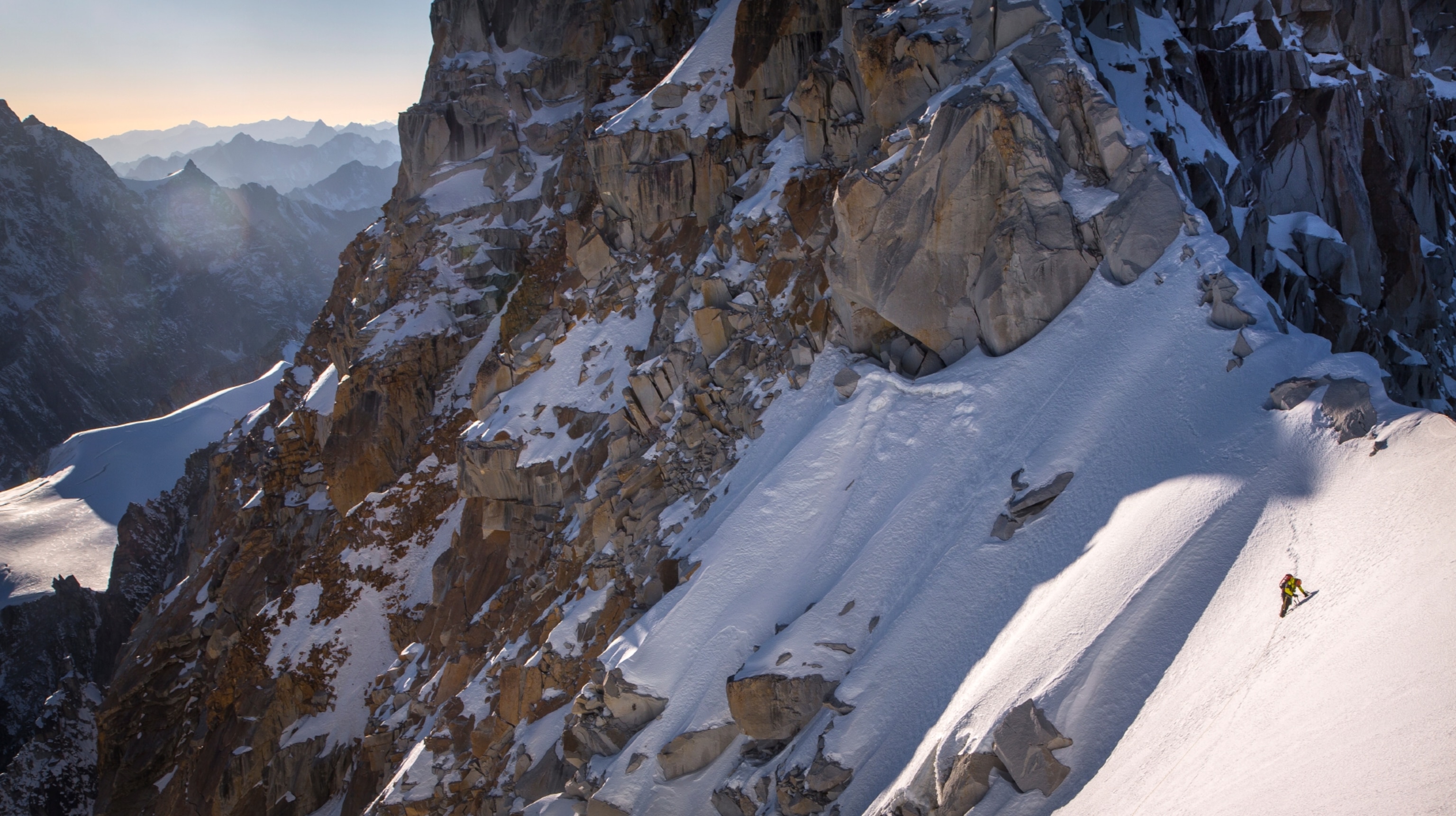
On Myanmar's Mystery Peak, Drama and a Challenge Like No Other
A grueling trek through a jungle, followed by a treacherous climb: How one team took on one of mountaineering's biggest tests.
One morning in early November, three highly skilled alpinists inched their way along a spine-like ridge, whipped by 70-mile-per-hour winds. The trio was roped together but not tethered to the mountain, and each man plunged his ice ax into the loose snow and rock, knowing that one misstep could send all of them hurtling to their deaths.
They had clawed their way up this precipice, hoping to reach the summit of an obscure mountain in northern Myanmar (Burma), and in the process settle a long-standing geographic question: What is Southeast Asia's highest mountain?
The three—Mark Jenkins, Cory Richards, and Renan Ozturk—were part of a six-person team that included leader Hilaree O'Neill, climber Emily Harrington, and the team's base camp manager, Taylor Rees. They had arrived in Myanmar at the beginning of October on an expedition sponsored by the National Geographic Society and The North Face with the goal of measuring the exact height of Hkakabo Razi, a peak that rises more than 19,000 feet (5,800 meters) out of the country's tropical rain forests.
Just getting to the foot of the remote mountain was a feat requiring more than two years of careful planning, delicate negotiations with Myanmar officials, and a 135-mile (217-kilometer), mud-sucking slog through a dense jungle filled with tigers, poisonous snakes, and bands of ethnic rebels fighting the Myanmar government.
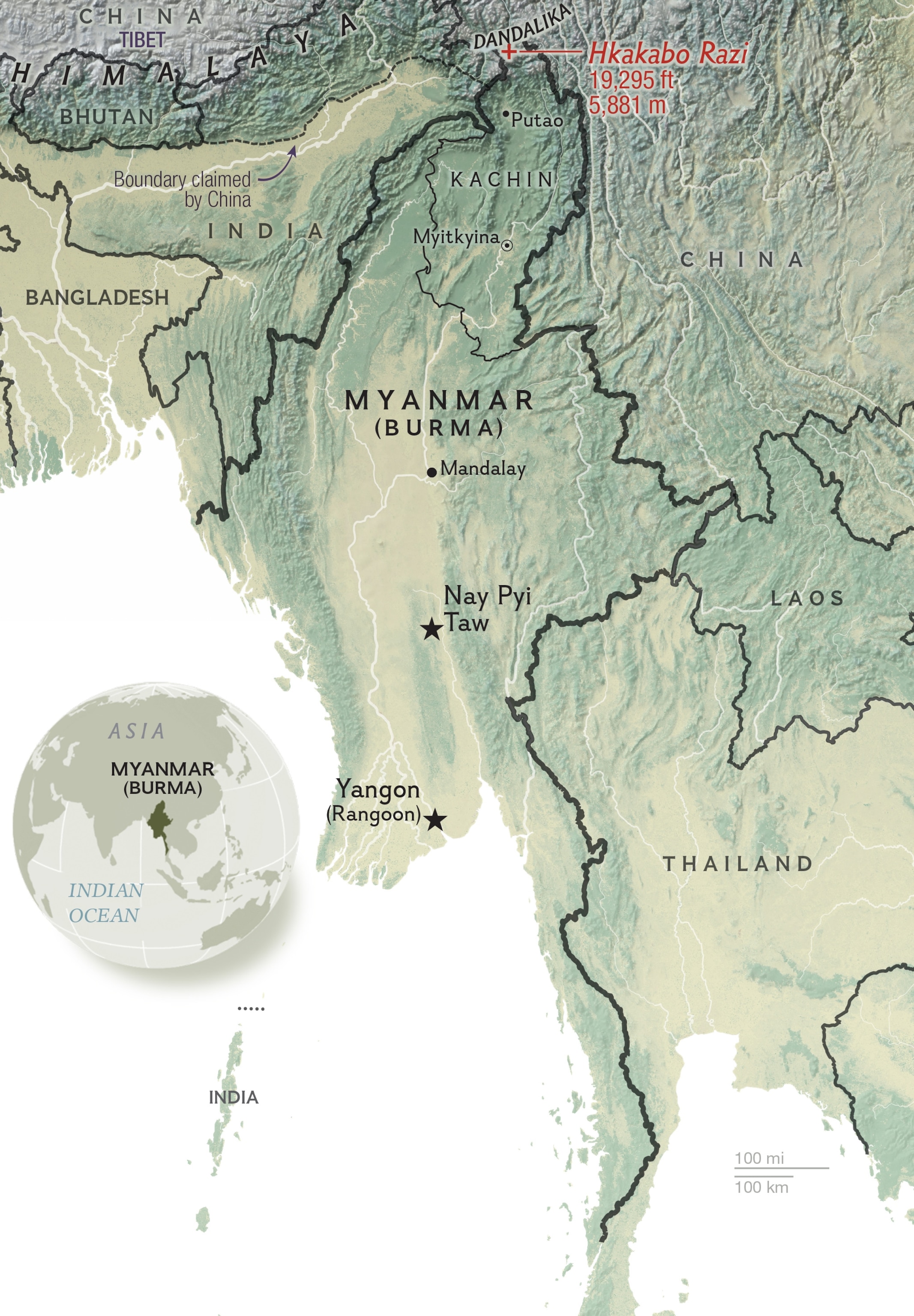
Over five arduous weeks, the team members had been pushed to their limits physically, mentally, and emotionally. Finally, high on the mountain and within striking distance of their objective, the strain nearly broke them when a disagreement over which of the five climbing members would try to reach the summit turned into angry shouting.
The conflict revolved around issues that are familiar to expert mountain climbers who push their limits on some of the world's highest peaks: how to balance their own pride and desire for achievement against the need to keep everyone in the group as safe as possible.
For each member of the group, Hkakabo Razi represented a rare chance to do something no one had done before, and the argument that boiled to the surface in some of the team's most desperate hours was partly a reflection of the team's passion for its mission.
"It was ugly," Jenkins said of the argument, "and in many ways heartbreaking."
A Brooding, Mysterious Peak
In an era that has seen the widespread commercialization of mountaineering, one in which a trip to the summit of Mount Everest is considered almost passé, serious climbers are hungry to find mountains that offer a rawer, some would say truer, spirit of adventure.
Few places fit the bill as squarely as the little-known Dandalika range, east of the Himalaya in northern Myanmar. And Hkakabo Razi (pronounced Kaka-bo Rah-zee), believed to be the tallest of these isolated peaks, has long stood as the biggest mountaineering prize of them all.
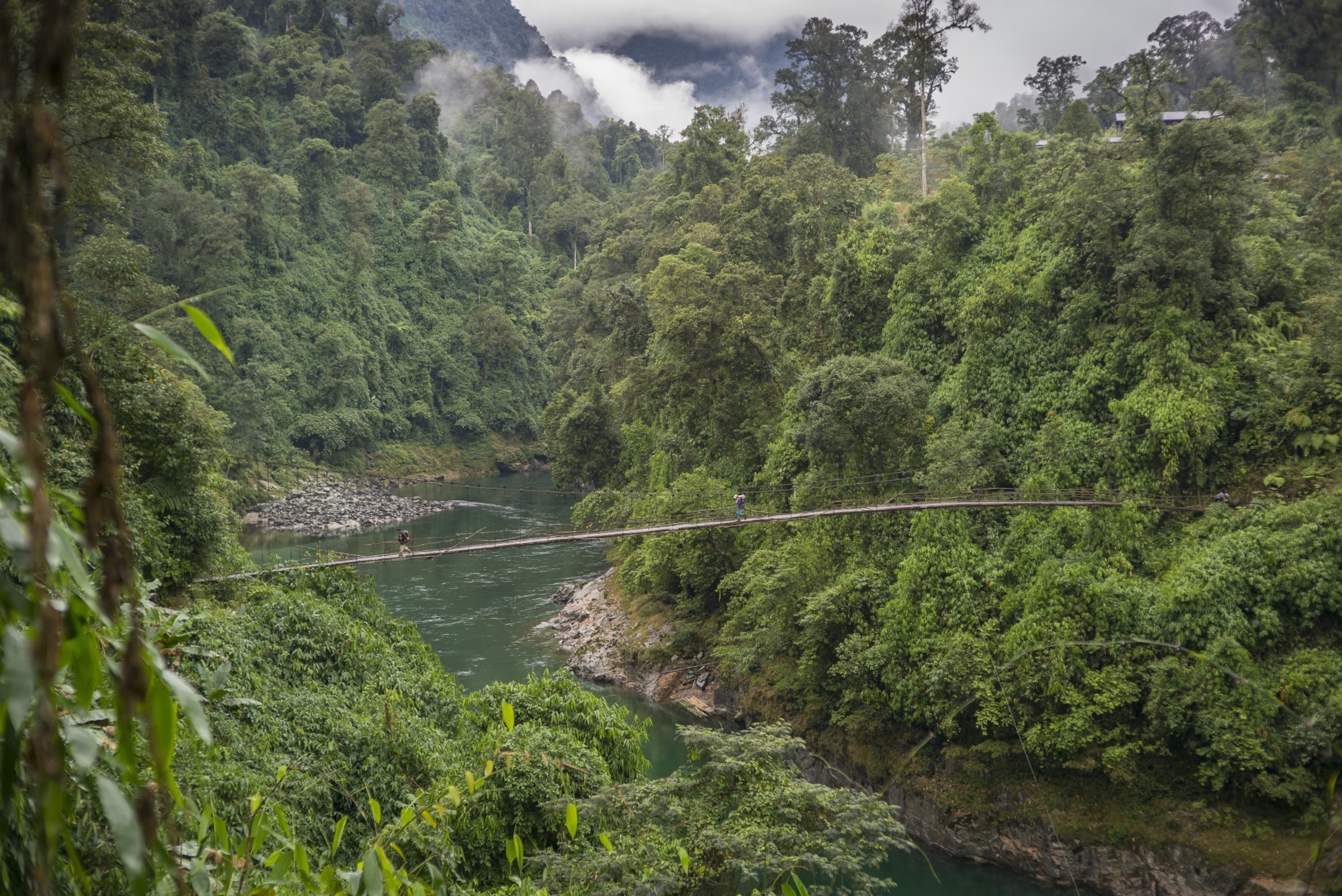
The British explorer and botanist Frank Kingdon-Ward became the first Western climber to attempt Hkakabo in 1937, when he stumbled upon the heavily glaciated, fog-ringed peak while looking for new orchid species in the surrounding jungles. He was mesmerized by its "brooding" quality and set out to climb it. But after hearing the thunder of avalanches higher up, he realized it was a fool's errand.
For decades the treacherous jungle that surrounds the mountain kept would-be climbers at bay. More recently, geopolitics became another barrier. Myanmar's military regime tightly controlled access to the region, which lies near the confluence of the Indian, Chinese, and Myanmar borders and within Kachin State, a region beset by sporadic attacks by ethnic rebel groups opposed to the Myanmar government.
Only one person, the Japanese climber Takashi Ozaki, who later died on Mount Everest, is believed to have summited the formidable peak—on his second attempt—in 1996. Yet he never accurately measured the mountain's height.
The original measurement of the mountain's elevation was determined by an Indian surveyor in 1923, who declared it to be Burma's tallest mountain at 19,295 feet (5,881 meters). But other surveys would later posit different heights, and questions have lingered about whether another peak in the region is taller than Hkakabo. In 2013, an American-Myanmar team reached the summit of nearby Gamlang Razi and, after measuring it using an advanced version of GPS, declared it could be the nation's tallest mountain at 19,259 feet (5,870 meters).
In his research for the National Geographic-North Face expedition, Jenkins had asked satellite image specialists at NASA's Solid Earth Group whether they could confirm that Hkakabo was in fact the tallest in Myanmar. They replied that their technology had a margin of error of a couple of hundred feet.
"In mountaineering a couple-hundred-foot difference between one peak and another makes a world of difference," Jenkins said. "As it turns out, even in this age of Google Earth, physically climbing to a mountain's summit is still required to determine its exact height."
So equipped with specially calibrated GPS devices—as well as the antidote for the 39 species of venomous snakes that inhabit Myanmar—the six team members had set out on an eight-week expedition, hoping to solve the mystery of whether Hkakabo really was the region's highest peak.
Experienced in High-Altitude Adversity
The team expected to face physical and mental hardships during the expedition.
"This was more than just a mountaineering expedition, with a lot more logistical complexities," Jenkins said. "We knew some things would go wrong. They always do. But without hardship there would be no adventure. And then, what's the point?"
Each of the climbers was a veteran of several high-profile expeditions and had performed well in challenging environments.
O'Neill, 42, became the first woman to climb two 8,000-meter (26,000-foot) peaks in 24 hours when she summited Everest and then repeated the feat on nearby Lhotse. Jenkins, 56, had claimed several first ascents around the globe, including some of the Arctic's highest peaks. Richards, 33, along with two partners, had survived an avalanche while accomplishing the first winter summit of Pakistan's 26,352-foot (8,032-meter) Gasherbrum II. Harrington, 28, had established herself as an elite big-wall rock climber before successfully climbing Everest with O'Neill and Jenkins.

Meanwhile, Ozturk, 34, perhaps had shown the most resilience of them all by climbing a particularly difficult route up a rock face of India's 20,700 feet (6,309 meters) Meru Peak just months after suffering cranial and spinal fractures and a partially collapsed lung while backcountry skiing.
It was Hkakabo's isolation and the prospect of solving the riddle of its true height that initially appealed to O'Neill and Jenkins when they came up with the idea for the expedition during a 2012 trip to Everest. In 1993, Jenkins had tried to climb Hkakabo via a route through Tibet but had been detained by the Chinese army.
"I always felt I had unfinished business there," he said.
Another draw was that Hkakabo presented an opportunity for the perfect "anti-Everest" expedition.
"Hilaree and I came off of Everest a little disillusioned with the commercialization, the paparazzi of Everest, the whole kind of scene," Jenkins said. "So, we were trying to think up an expedition we could do that was like an old-fashioned expedition—something that was remote, something that was obscure."
An old-school expedition is what they got.
By the time the climbers had reached their final high-altitude camp in early November, they already had been traveling for 38 days, having traversed Myanmar by boat, plane, and train. Once they reached the outskirts of the jungle, they hired motorcycle drivers to carry them and their gear along muddy trails until the vegetation became too dense and they were forced to continue on foot, 130 miles (209 kilometers) through a steaming jungle where temperatures frequently hit 100°F (38°C) with 90 percent humidity.

From the beginning, the trip presented obstacles the team had not anticipated. For example, none of them expected that officials in the outpost town of Putao would put the team under arrest. Although the team had gotten the required travel and climbing permits in the Myanmar capital of Naypyidaw, the local officials in Putao questioned the team members' presence and detained them for four days before releasing them without explanation.
And then there was the jungle itself—sweltering, slippery, and full of plunging gorges and rain-swollen rivers that had to be crossed via questionable rope bridges.
"It was very dark. It was very treacherous. Every single step, you don't know where you're going," said Rees, 29.
Perhaps the most crucial challenge was the lack of available porters to help carry supplies. Unlike in Nepal, where there is a well-established tradition—not to mention economy—built around carrying loads of gear and supplies for mountaineers, local porters were hard to come by in Kachin. This was partly because there isn't much of a tradition for such work—after all, few foreign climbers had been allowed in the area—and because at the time of the expedition many of those who might have been available for such work had been absorbed by the efforts to rescue two Burmese climbers who had disappeared on Hkakabo a few weeks before the team had arrived.
Eventually the team was able to hire an assortment of farmers, grandmothers, and sometimes entire families to help them carry their gear, but most of the people hired didn't last very long, often leaving after just one day of walking.
As a result, the team had to abandon more than half its gear in order to have any chance for success. In the lowlands, they left behind some of the warm clothes they would need later on the mountain, as well as some of their rope and food—a decision that later would jeopardize the trip's outcome.
Out of the Jungle, Up the Mountain
After two weeks of trekking, the team emerged from the jungle with blistered feet and insect-ravaged skin and began pushing up the glacial flanks of Hkakabo. There the humidity took the form of a frosty mist, and the team members donned what winter gear they still had with them.
The jungle trek had taken more than just a physical and logistical toll. By the time they started climbing, the group's dynamic was strained, and their spirits were as taxed as their bodies.
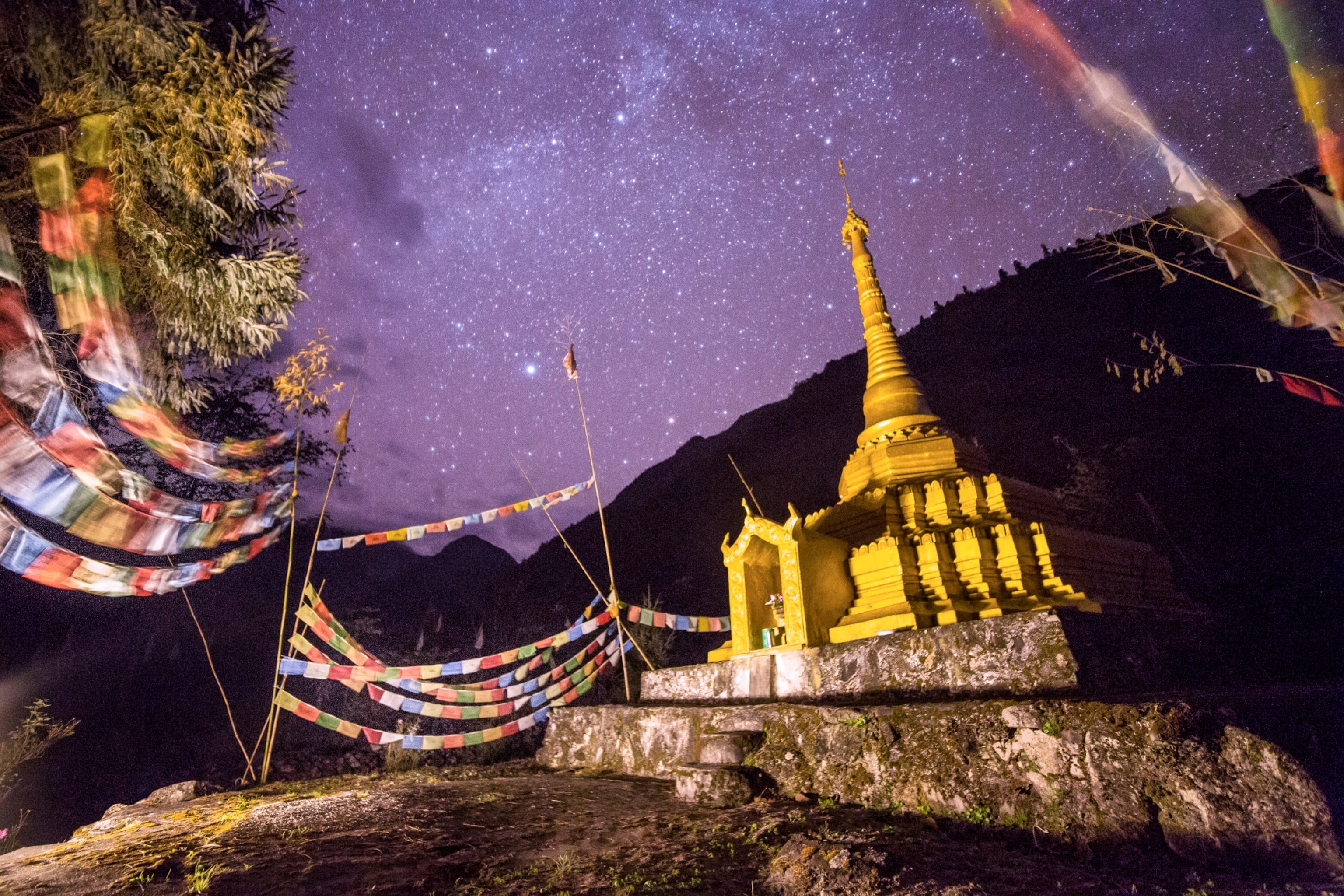
The team had relied on satellite maps to chart the route, but often such maps can be deceiving, especially in largely unexplored areas. What may look like a viable route can be impassable because of a recent rockfall that doesn't show up on the map, for example.
Without the previous experiences of other expeditions to help refine their maps, the team members embarked on a few routes that led to dead ends, forcing them to backtrack and further depleting their energy and resources.
As they moved higher up the mountain and the climbing became more perilous, other strains began to surface. The tensions finally came to a head when the team made its final camp before attempting the summit.
It had been an especially difficult day of climbing to reach 18,200 feet (5,547 meters), and Jenkins, Richards, and Ozturk were concerned about O'Neill's and Harrington's ability to continue safely to the summit.
Over the past several years, O'Neill had taken on the role of mentor to Harrington and had held back on the route to Camp Three in order to coach Harrington, who had never experienced this type of climbing before, through some of the day's difficult sections, which had slowed both women's efforts as they moved up the mountain.
"I didn't feel out of my element at all, and I don't understand that perspective," O'Neill said later about the men's assessment of her ability.
Upon arriving at Camp Three, alarmed by the skills they had seen from the women that day, the men gathered in Ozturk and Jenkins's tent and decided that they would make up the summit team. When they voiced their concerns and decision, tensions boiled over and a ferocious argument erupted.
Harrington agreed that she was uncomfortable continuing farther up, but O'Neill thought she was up for the challenge and felt as if she was being edged out of her own expedition.
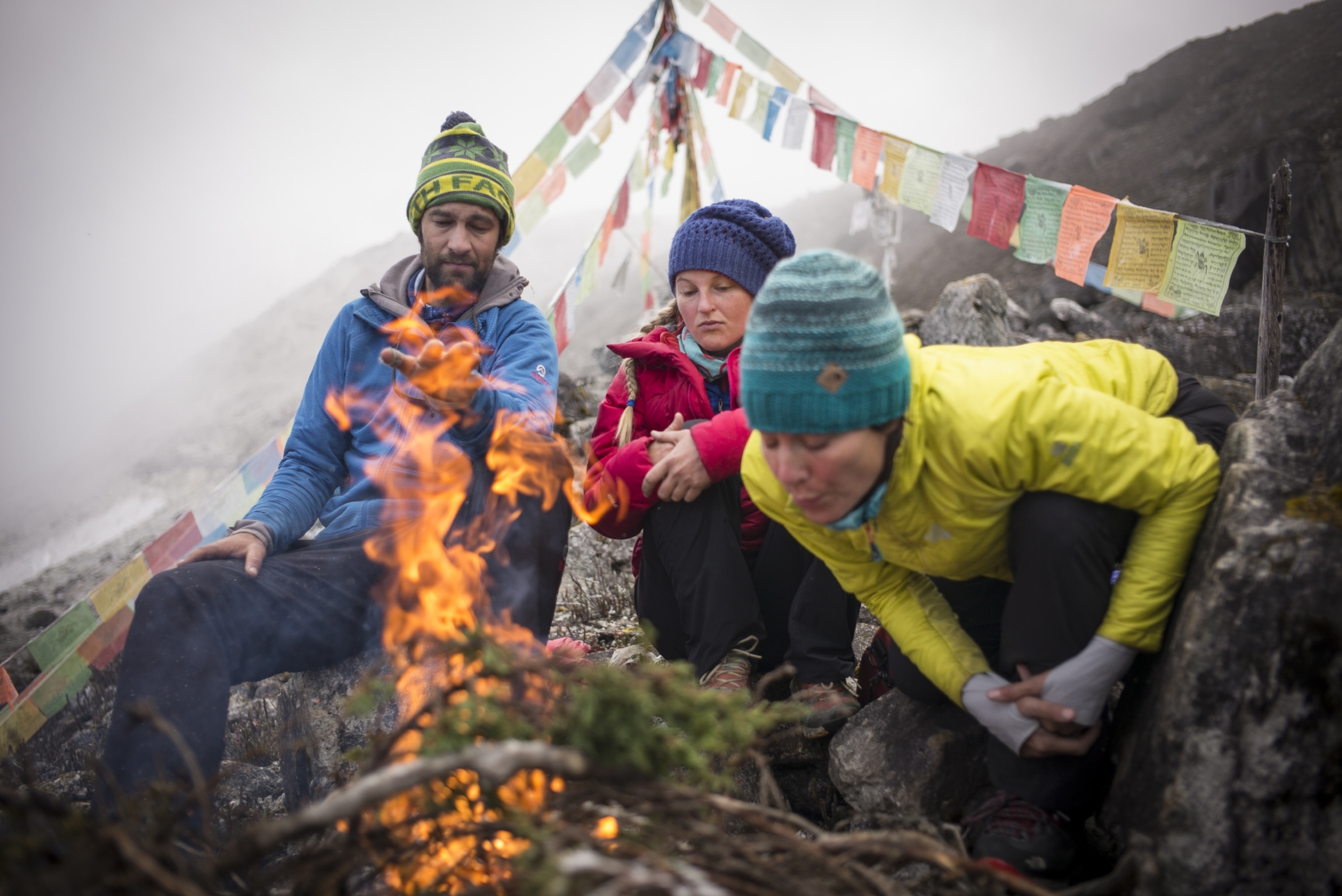
"I went into their tent and they said, 'We've decided this is the [summit] team. These are the three that have the most experience, and we can't do it with more than three,' which I agreed with," O'Neill said. "I think I would have even agreed to the [decision] in the end if I had been a part of the initial conversation. I felt super disrespected to not have been included in the initial conversation."
Aside from questions about her ability, Jenkins also pointed out that O'Neill had become nearly hypothermic a couple of days earlier, and that if it happened again while the team was making its push for the summit, the results could be disastrous for everyone.
In hindsight, O'Neill agrees that the men had more experience with the type of climbing Hkakabo demanded, but she still thinks she had the skills to make a solid summit bid.
"Yes, I believe Cory, Renan, and Mark have more experience with that kind of climbing, but based on that type of climbing—really scrappy alpine climbing—I know I have the skills for it. I know I have the strength and the temperament for it," O'Neill said later.
The argument spilled over into the next day, a rest day, and that afternoon O'Neill angrily told the others that as the expedition's leader she would be part of the summit team. But when she woke up the next morning and the subfreezing temperatures and fierce winds hadn't abated, she relented, saying that she had reassessed the possibility of developing hypothermia.
In talking about her decision afterward, she expressed some regrets. While she was not proud of how she had handled the argument, she believed she had earned her spot on the team.
"The expedition was my baby, my idea. My perseverance got everyone there to begin with, and I thought I deserved a shot. I don't think my presence would have by any means undermined the safety of the team," she said.
When asked if she believed the men not wanting her on the summit team was due to her gender rather than her skills or strength as a climber, O'Neill didn't think so. She believed it had more to do with Jenkins's desire to complete a project he had started more than 20 years ago, no matter the cost.
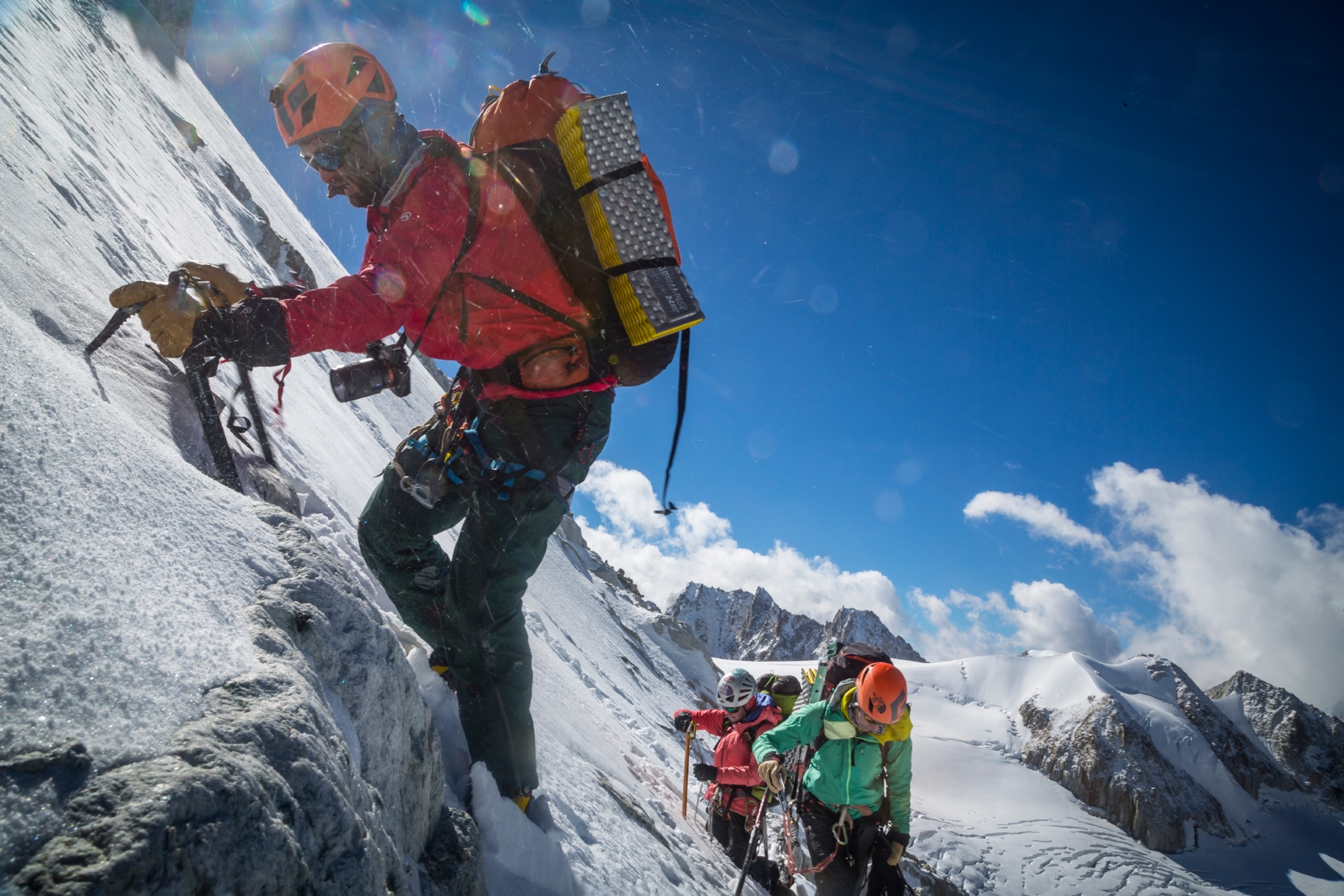
Once O'Neill had stepped aside, Richards, Jenkins, and Ozturk finally began the trudge up the ridge toward the summit a little after 7 a.m. on November 7, with the temperature at 7°F (-14°C).
Despite the favorable numerology, the men found themselves pushing through a deep, humid cold, which combined with the wind produced bone-chilling conditions.
To minimize weight, they carried enough gear and supplies to survive just one night. Each man had a sleeping bag, and they divvied up the rest: a two-person tent, a stove (which they could use to melt snow for water), one bottle of fuel, two freeze-dried meals, and some snacks and noodles.
From the start, the terrain was complicated—a two-mile (three-kilometer) exposed ridge punctuated with steep, toothlike spires covered in sugary snow and loose, shattered rock that the team had to climb over and across as the high winds snapped their parkas and whipped their ropes.
"It was exactly like walking through the jungle—convoluted, up and down, you-can't-make-a-mistake kind of terrain," said Richards, the expedition's photographer.
By noon, they had crested a ridge and reached a rocky shelf set in the sun on the mountain's south side. There they could see the summit up close for the first time. It looked like a snowy Egyptian pyramid, and the sight of it inspired optimism in the men.
"It was definitely a morale boost. It looked way out there, and I think we were all a little intimidated, but our spirits were uplifted, and we were like, 'Oh, maybe we can do this,' " Ozturk recalled.
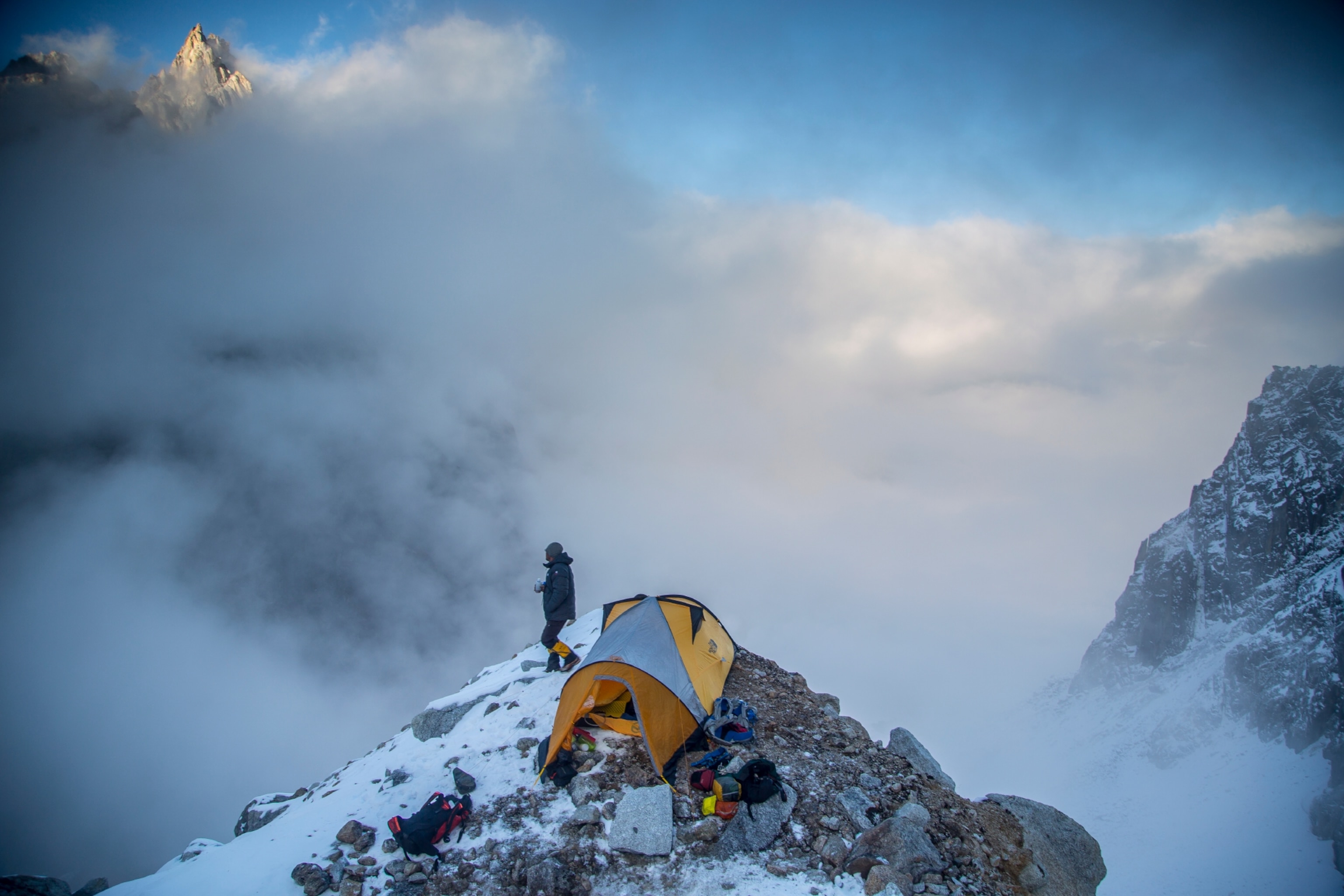
Ultimately, the Mountain Decides
They climbed on for about four more hours before setting up camp for the night on a crevasse that had been filled in by rockfall and ice. It was a frigid night, and the men got almost no sleep before they rose at 3:30 a.m. To travel as light as possible, they left their tent, sleeping bags, and stove behind at the camp when setting out about three hours later.
The climbing was more of the same—an endless maze of spires jutting up from the ridge. After four hours of climbing, Richards voiced his doubts.
"I'm scared. I'm really scared, and I think we should turn around now," he said.
He felt the team was putting too much terrain between themselves and safety. "If anything had gone wrong," Richards said later, "it would have been incredibly hard to reverse."
Ozturk and Jenkins persuaded Richards to push on. Jenkins led out another rope length, climbing around another spire and then down into a depression on the ridge. From his position, he could see the summit, as well as another depression dotted with more spires blocking their route.
Jenkins assessed the situation. To get to the summit would require a night exposed to the elements without a tent or sleeping bag, without food, without a stove, he figured.
"I felt that that was too risky for us and that we might not live through it," he said. "And even if we did survive, we would almost certainly have severe frostbite."
So, he turned around and climbed back to his team.
"The expedition's over," he told Ozturk and Richards. "That's it. We've gone as far as we can go."
Although the summit looked close enough to reach, Ozturk and Richards nodded in agreement. Jenkins took an altitude reading that showed they'd topped out at 18,840 feet (5,742 meters). They guessed they were about 800 feet (240 meters) below the mountain's highest point and three-fourths of a mile (1.2 kilometers) away.
"Everything we'd experienced up to that point actually contributed to our choice to turn around because we were exhausted. I was so tired," Richards recalled. "If you could circumnavigate some of the [problems] we had been through early in the trip, I think we would have all been firing on more cylinders, more capable of reaching that summit."
Jenkins believes the trip had inherent faults from the beginning.
"We can attribute some of our failure to the unforeseen, but I think there were design flaws before we even left America."
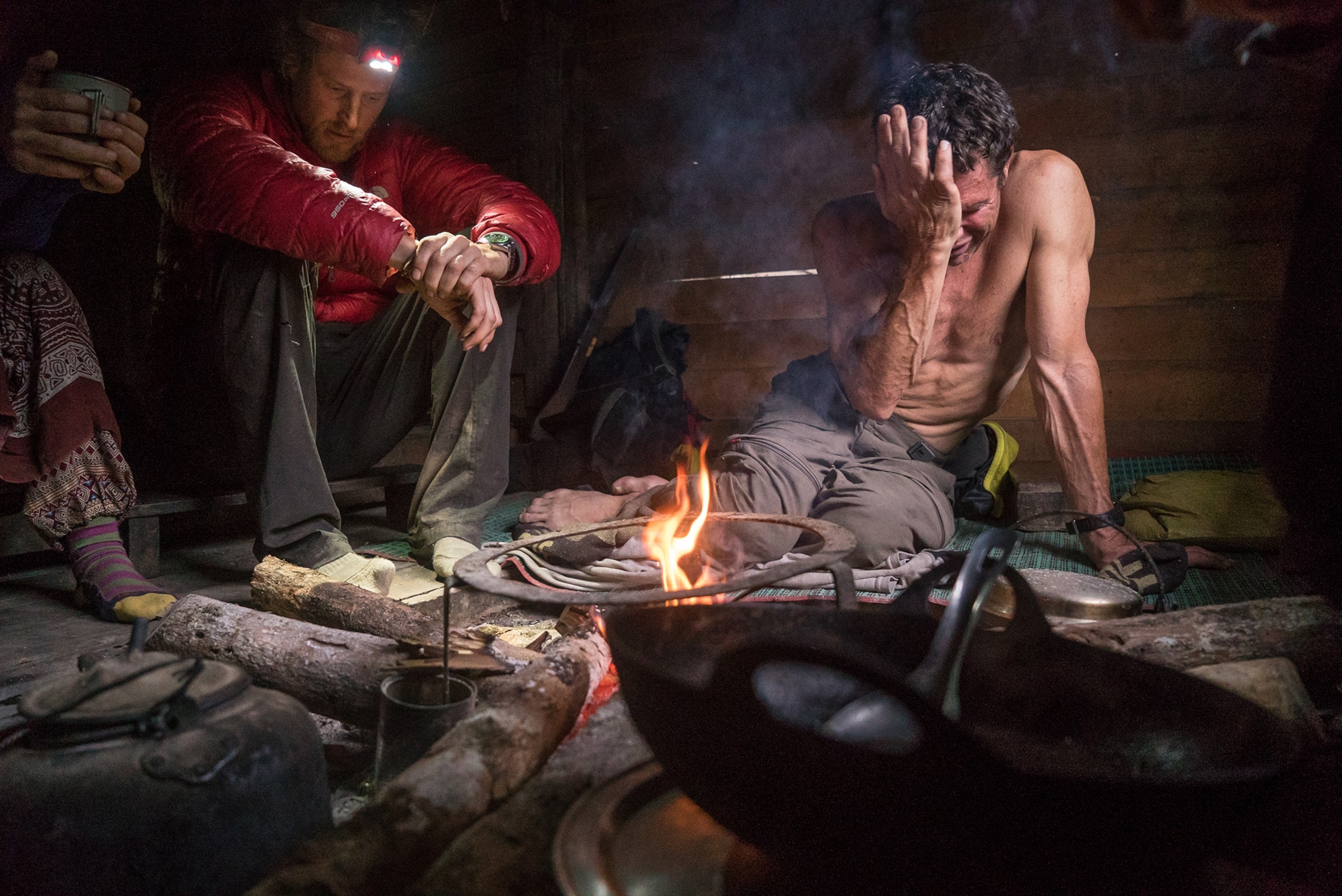
He believes the team needed more porters and more food, and especially more time beyond the eight weeks they'd allowed themselves to accomplish their goal of summiting Hkakabo.
"I think that we knew when we got there that we were up against it, but we didn't adapt. We were boxed in in terms of departure flights, in terms of food—mountain food—and we kind of stabbed ourselves by not having that."
But the men agreed that the choice to turn around was the right one.
"The decision is, do you want to push hard enough to lose your toes, your fingers, or your life?" Ozturk said. "That's always the trick with Himalayan climbing. You have to be good enough to know where that inflection point is to turn around."
They were disappointed, but Richards and Ozturk felt some relief at the decision to turn back. Jenkins particularly was disheartened by his second failure to summit Hkakabo.
"Unlike other expeditions, where you've been on the mountain for two months, it wasn't a relief for me to turn around. It was really a very great disappointment," he said. "I was heartbroken. On the other hand, I've spent enough time in the mountains to know that if you don't have that ability to turn around, you don't live through expeditions."
Success Is Coming Home Alive
In the mountains, success isn't always defined by achieving an objective. Sometimes, the greatest measure of achievement is coming home alive. By that criteria, the team was successful.
Thirty-six hours after making their push for the summit, Richards, Jenkins, and Ozturk arrived back at Camp Three (at 18,200 feet, or 5,547 meters) just as dusk was falling. O'Neill and Harrington had prepared a three-person tent, warm water bottles, and a meal for their teammates. The three climbers collapsed in their tent. There was no banter or rehashing, just sleep.
The next day, they packed up and began the long walk home. Twelve days later, the entire team emerged from the jungle, emaciated and exhausted. On November 23, after nearly two months in Myanmar, they flew back to the United States and reunited with their family members.
"It was a long, hard trip, but that's the point of a trip like that—to get stripped down to utter nothing and find your way back," said O'Neill.
Hkakabo's true height remains unknown, but the team members believe they moved the ball forward.
"We speculate that Hkakabo Razi is the highest peak [in Myanmar] because of how much higher it looked than the other nearby peaks and how high we know some of the other peaks are, but it's still unknown," Ozturk said.
"There's a reason that this mountain hasn't been mapped," Richards said. "It's hard to do. So the mystery remains, and it's out there for anyone to go and solve."

Look for in-depth coverage of the team's Myanmar expedition in an upcoming issue of National Geographic magazine.
Kelley McMillan is a freelance journalist based in Boston.
Correction: An earlier version of this story incorrectly stated that the team obtained their travel and climbing permits in Yangon; they got them in Naypyidaw. Also, the 2013 American-Myanmar team that summited Gamlang Razi did not say it was Myanmar's tallest mountain, but that it could be.
